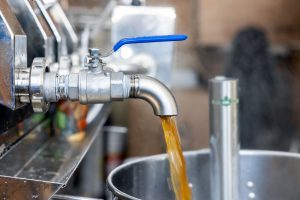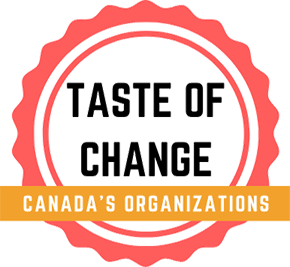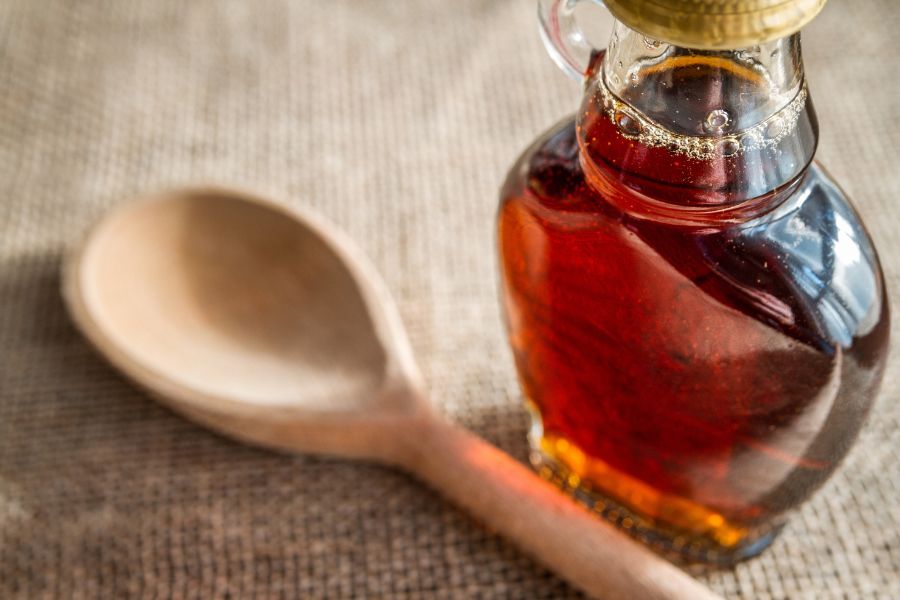Who’s The World’s Largest Producer of Maple Syrup?
With its luscious taste and natural sweetness, maple syrup is a treasured delight enjoyed by people around the globe. It’s normal to wonder where maple syrup comes from. This exquisite golden liquid, extracted from the sap of sugar maple trees, has its largest and most influential producer in the picturesque landscapes of Canada.
Renowned for its maple syrup production, Canada has carved out a reputation as the world’s maple syrup superpower, with the province of Quebec leading the charge.
What are the reasons behind Canada’s dominance in maple syrup production? Get ready to find out. The journey of how Canada became the world’s largest producer is fascinating, and you can’t afford to miss it!
History Of Maple Syrup Production
Maple syrup production boasts a captivating history that spans centuries, deeply intertwined with North America’s cultural and culinary heritage.
This delectable natural sweetener’s origins go way back to Indigenous peoples who inhabited the northeastern regions of the United States and Canada.
These resourceful tribes noticed that the maple tree sap would flow from late winter to early spring when days became warmer and nights remained cold.
Inspired by nature’s gift, indigenous communities developed unique techniques to harvest the maple sap and convert it into sweet syrup.
They skillfully made incisions in the maple trees and collected the dripping sap to produce maple syrup. To concentrate the sugars and remove excess water, they used hot stones to heat the sap in wooden troughs, which required patience and ingenuity.
Earliest Discovery
As European explorers arrived in North America during the 16th and 17th centuries, they encountered the Indigenous practices of producing maple syrup.
Fascinated by this delicious discovery, early settlers eagerly embraced the techniques and integrated them into their culinary traditions. This cross-cultural exchange further enriched the history of maple syrup production, making it a part of the evolving cultural tapestry of the region.
With the expansion of European settlement in the northeastern woodlands, maple syrup production became more widespread.
Early settlers established “sugar camps” during spring to process the sap collected from the maple trees. These camps served as centers for boiling the sap over open fires using iron kettles, a labor-intensive process that required vigilance and dedication.
The 19th century brought about significant advancements in maple sugar production. Innovations like metal buckets, replacing traditional wooden containers, and later tubing systems significantly improved sap collection efficiency.
Metal buckets were more durable and easier to manage, while tubing systems simultaneously allowed for sap gathering from multiple trees.
Modern Day
Vermont and Quebec emerged as major maple syrup producers in the late 19th and early 20th centuries. Quebec’s climate and vast maple forests provided the ideal conditions for large-scale syrup production, positioning it as a central hub for the industry.
As the maple syrup industry expanded, there was a growing need for standardization and regulation to maintain quality and consistency.
Organizations like the North American Maple Syrup Council and the Canadian Maple Syrup Producers Association were established to set industry standards and promote best practices.
In the modern era, pure maple syrup production has evolved by integrating advanced technologies. Production includes vacuum systems to enhance sap extraction, while reverse osmosis removes excess water, streamlining the process.
Stainless steel evaporators have replaced traditional kettles for boiling, further increasing efficiency without compromising the quality of the final product.
The Maple Syrup Industry in Canada

Undoubtedly, Canada’s federal budget isn’t the only impressive feat the country has achieved as far as food is concerned. Canada’s love affair with maple syrup dates back centuries, with indigenous peoples being the first to discover the sweet nectar flowing from maple trees.
Today, the Canadian maple syrup industry is integral to the country’s identity, culture, and economy. The production process is time-honored and relies on the expertise of generations of syrup producers.
Quebec Leading the Maple Revolution
Besides building sustainable food systems, Quebec is a model maple syrup producer globally. Among all the provinces in Canada, Quebec produces maple syrup in grand quantity. As of 2022, it produces 15.9 gallons of maple syrup.
Renowned for its vast forests of sugar maple trees, favorable climate, and experienced producers, Quebec accounts for most of the country’s maple syrup output.
The “cabane à sucre” (sugar shack) tradition is deeply rooted in Quebec’s rural culture. When the winter chill starts to thaw every spring, producers tap maple trees to harvest their sap.
Once collected, the sap is carefully boiled in large evaporators until it transforms into the rich, amber-hued liquid we know as maple syrup.
Strategic Geographic Advantage
Canada’s geographical position plays a significant role in its maple syrup dominance. The country’s expansive landmass, particularly in eastern regions, is home to vast maple forests, providing the ideal environment for maple trees to flourish.
The perfect blend of cold winters and warm spring days facilitates sap flow, creating a superb maple syrup harvest.
Meticulous Quality Standards
Canada upholds rigorous quality standards to maintain its reputation as a premier maple syrup producer. The Canadian Food Inspection Agency (CFIA) ensures that all maple syrup products meet the highest quality and purity requirements.
This commitment to quality has garnered international recognition, reinforcing Canada’s position as a global leader in maple syrup production.
International Demand
The allure of authentic Canadian maple syrup extends well beyond its borders. Exporting maple syrup to numerous countries worldwide has contributed to Canada’s impressive market share. As people around the globe seek natural and healthy alternatives to sweeteners, the demand for maple syrup continues to grow, solidifying Canada’s position as the world’s leading supplier.
Environmental Stewardship
Maple syrup production in Canada is also characterized by its dedication to environmental sustainability.
Many syrup producers adhere to responsible tapping practices, ensuring their activities have minimal impact on the surrounding ecosystem.
By prioritizing the health of maple trees and promoting sustainable forest management, Canada exemplifies a model of environmental stewardship in the maple syrup industry.
Other Top Maple Syrup Producers
While Canada, particularly Quebec, is the largest producer of maple syrup, some other countries and regions also contribute significantly to the global production of this sweet treat.
Some of the other top maple syrup producers include:
Vermont
The United States, particularly the state of Vermont, is one of the world’s most significant maple syrup producers. Vermont is known for its high-quality syrup and iconic sugarhouses where visitors experience the maple syrup production process.
New Brunswick
Besides Quebec, New Brunswick is another Canadian province with a notable maple syrup industry. Its cool climate and vast maple forests make it well-suited for syrup production.
Ontario
Ontario, another Canadian province, is also a significant producer of maple syrup. The region’s maple syrup production contributes to Canada’s overall dominance in the global market.
New Hampshire
New Hampshire in the United States has a thriving maple syrup industry. Its picturesque landscapes and ample sugar maple trees make it an ideal location for syrup production.
Maine
Maine is known for its vast sugar maple groves and contributes significantly to the United States’ overall maple syrup production.
Wisconsin
Wisconsin is one of the leading maple syrup producers in the Midwest region of the United States. The state’s cold winters and mild spring climate support a healthy maple syrup industry.
Nova Scotia
In Eastern Canada, Nova Scotia is also famous for its maple syrup production, with numerous producers tapping into the region’s maple trees.
Prince Edward Island, Canada
While small compared to some other provinces, Prince Edward Island, Canada, also participates in maple syrup production.
New York, USA
Besides Vermont, the state of New York is one of the significant maple syrup producers in the United States, contributing significantly to the country’s overall production.
It’s essential to note that while these regions are significant maple syrup producers, they generally account for a smaller portion of the total maple syrup produced globally compared to Canada.
World’s Largest Producer Of Maple Syrup
Maple syrup is a great healthy alternative to sugar. Like vaping, which may be a beneficial way of ingesting CBD, it should still be taken in the right proportion.
Canada’s reign as the world’s maple syrup production kingpin is a testament to its rich natural resources, dedicated producers, and longstanding traditions.
With Quebec maple syrup producers at its helm, the Canadian maple syrup industry is an emblem of the nation’s heritage and commitment to quality.
As global demand for this delectable syrup continues to rise, Canada’s role as the maple syrup superpower remains secure.


